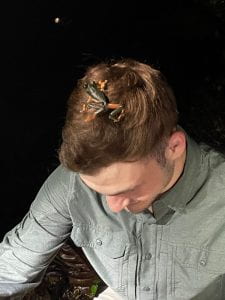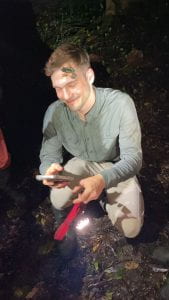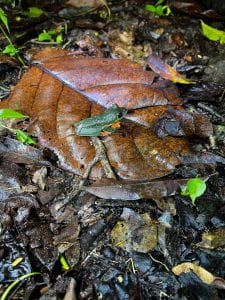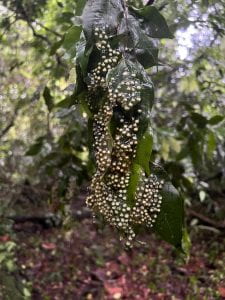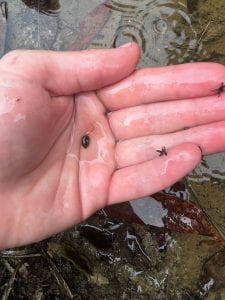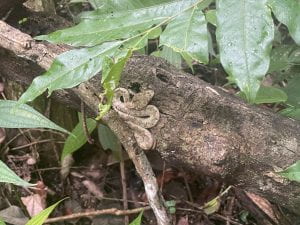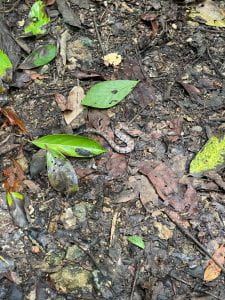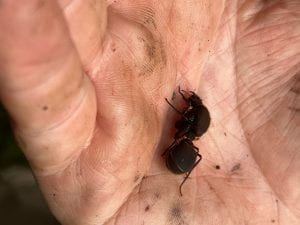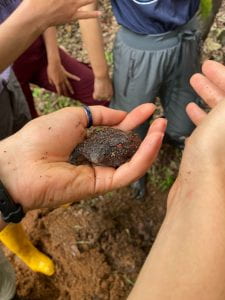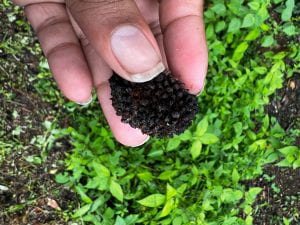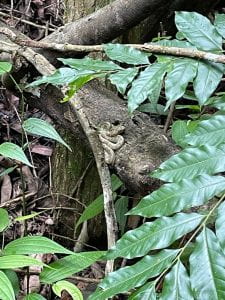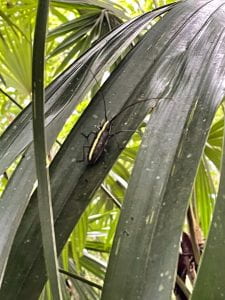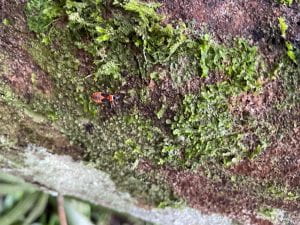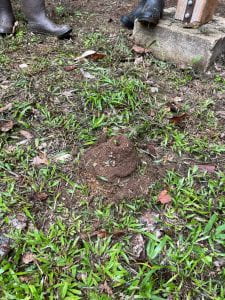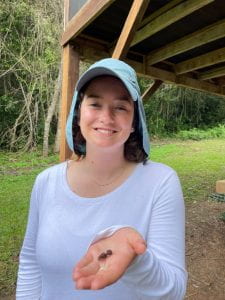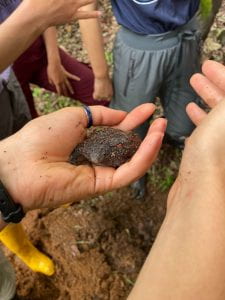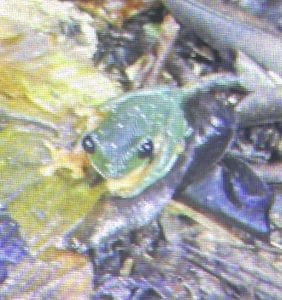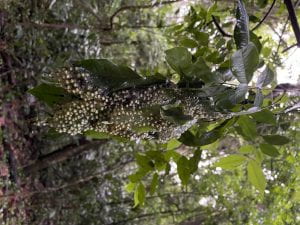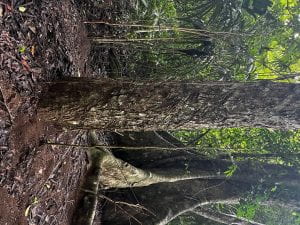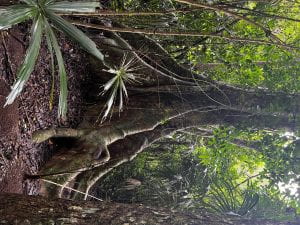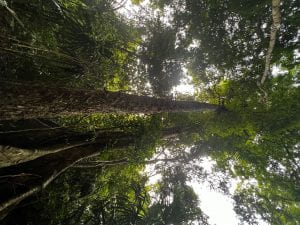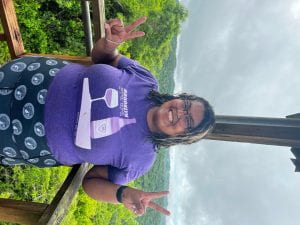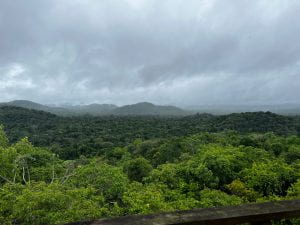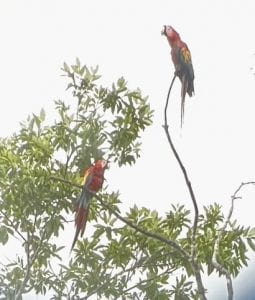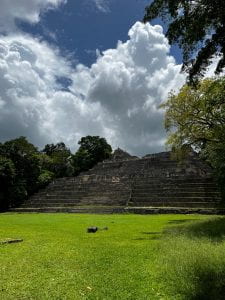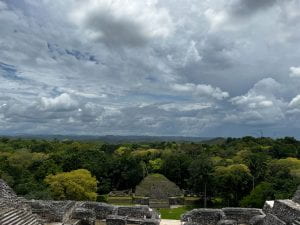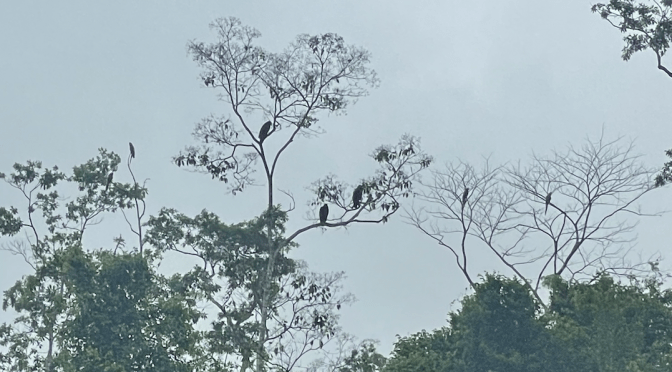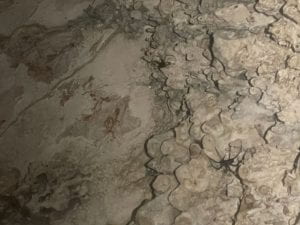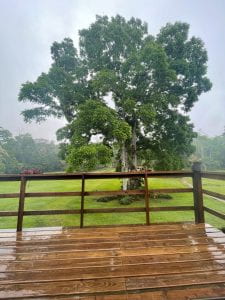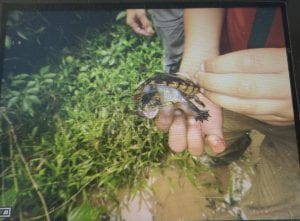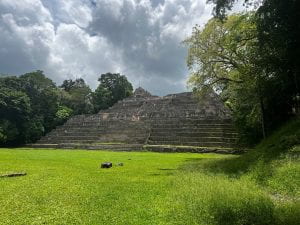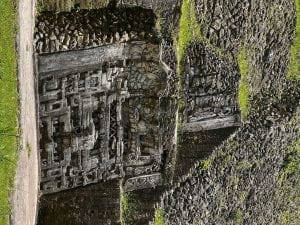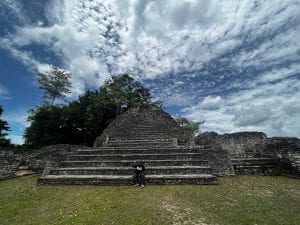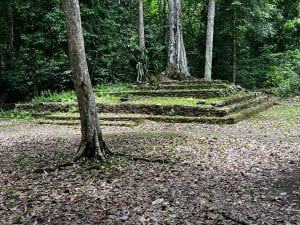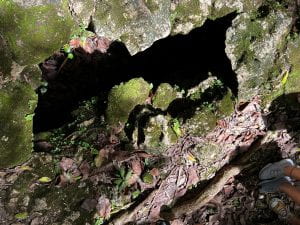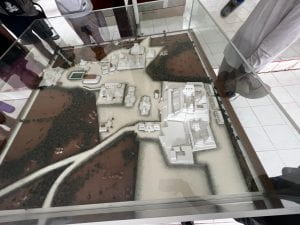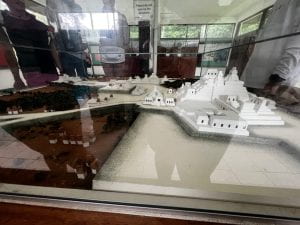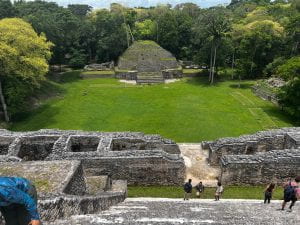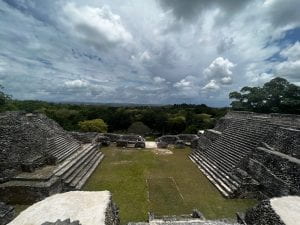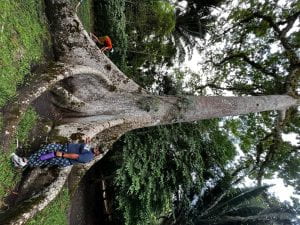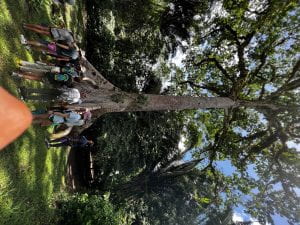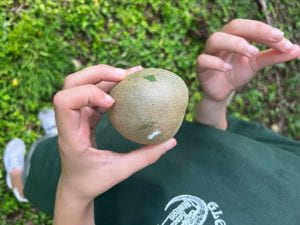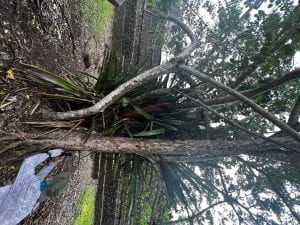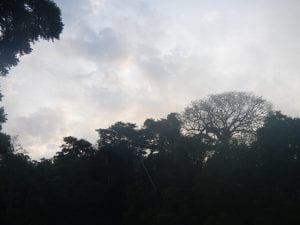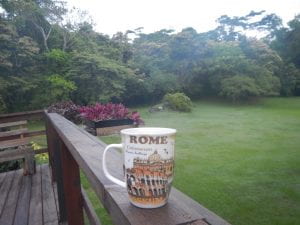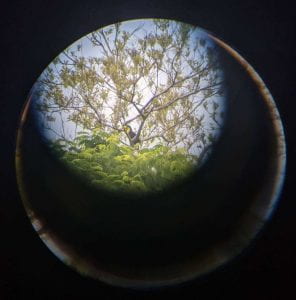I mentioned earlier that Day 4 was my favorite day and also was sure that title would be given to another day soon. Well, I must say even though every day on this trip has been incredible, today is going to be hard to beat! Not only did I see the toad I hoped to encounter the most, but I was also lucky enough to see and interact with the critically endangered Morelet’s Treefrog. The only word to describe today is simply incredible.
We began actually on a much different note, with Michael’s lecture on the complexities and paradoxical nature of tropical soils, and then proceeded to discuss ways to analyze the abundance of arthropods on the forest floor compared to the canopy. Yet, as a critical component of this test, we needed a solution to place in our traps that is high in the nutrients the forest lacks, like nitrogen. Luckily (or rather unluckily) we had access to a supply produced by 18+ individuals…urine. I wasn’t expecting to be peeing in a conical tube for science, yet here we are. We placed our pitfall traps through the forest and will return to them in the morning to assess our success. While placing them though we happened across first a jumping viper, and then a moment later I spotted the incredibly rare eyelash viper! The station manager at the LCRS said he had yet to see one in his 12 years of working here.

The afternoon and evening are when the fun activities not utilizing bodily fluids took place. We started by excavating a couple of leaf cutter ant nests. We were able to dig until we saw the spongey, grey, honeycomb textured fungus gardens the ant meticulously tend to. But when digging up a larger colony, we came across a wet, gelatinous, black a red blob just below the surface. After some gentle dirt removal, we uncovered the amphibian I hopped to see most, the Mexican Burrowing Toad (Rhinophrynus dorsalis)! He was the cutest little guy (I’m not actually sure about the sex of this particular individual) but these toads break the stereotypical mold of how a toad should look, with a wide gelatinous body and a head but no visible neck. The photo I’ve attached is a far better descriptor than I could possibly provide verbally. I was able to hold him for a couple minutes and to my initial surprise, his hind legs were super strong (which they use to burrow through the ground). This species is primarily active during the wet season and also feeds on ants, so it was definitely a right time right place kind of moment. He did pee on me a few times (a common defense mechanism by toads/frogs) so I guess it’s a common theme between today’s activities.
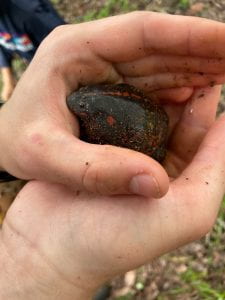
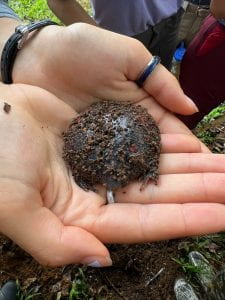
I thought this was the best I was going to do on this trip. I knew we had planned a night hike, yet I have been trying not to keep my hope too high when encountering more than eggs/tadpoles, as frogs and amphibians are quite elusive. However, when hiking towards the location we saw treefrog eggs yesterday (frog pond), we came across a Morelet’s Treefrog among the leaf litter of the forest floor. I crouched down to take a few photos, and moments later he hopped from the ground to my light, to my hand, and then finally landed on my face/head. His body was cool and moist and I could feel the tackiness of its toepads on my face. He made a final resting place on the crown of my head/hair, but after a little nudge from a bug spray-free hand, we convinced the little guy to move onto a nearby tree. This is honestly one of the coolest moments of my life and such an incredible memory.
We then went to check on the eggs we spotted earlier. And there we sadly saw a northern cat eyed snake. These snakes eat frog eggs, and we watch him for several minutes waiting to see if he was on the hunt for a snack. The snake was quite slow at first, but while waiting we happened across another Morelet’s Tree Frog! What are the chances! After another photo session we returned to the snake and to my sadness yet also fascination, he began to feed on some of the eggs. This is one reason amphibians produce utterly massive quantities of eggs, as they make easy snacks without a protective shell or relatively many defenses at all. We watched the snake for probably 20 minutes as he ate a few but not many eggs. I am definitely team tree frog, yet to watch this interaction in nature was truly amazing. I mentioned yesterday how treefrog eggs can hatch early to avoid predation, yet that didn’t happen in this case. They may have not been at the right developmental stage but regardless there was no water below for them to land in anyways. However, as we moved our headlamps we spotted several snakes in the vines around. We counted 7 but I am sure there were many many more!
Today was a real-life nature documentary. I think this was the ideal day I could have had on this trip, and I may have an incredible number of itchy insect bites, but any discomfort has been well worth this once-in-a-lifetime experience! I am saddened by the fact the end is nearing quite quickly. A warm shower sounds nice, but I’ll take the cold cave water showers any day to continue exploring here at Las Cuevas.

